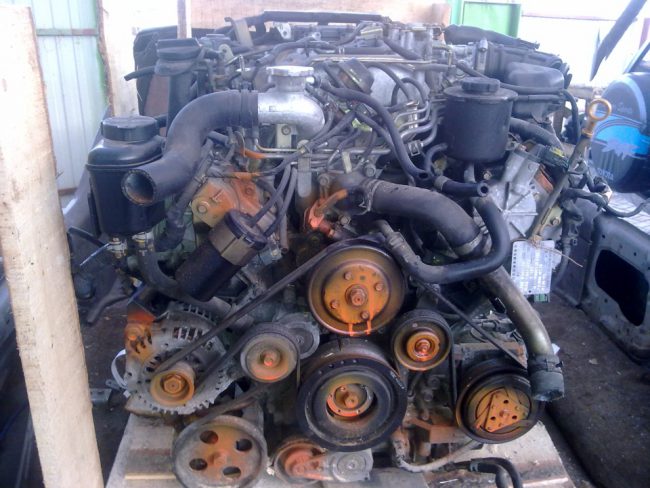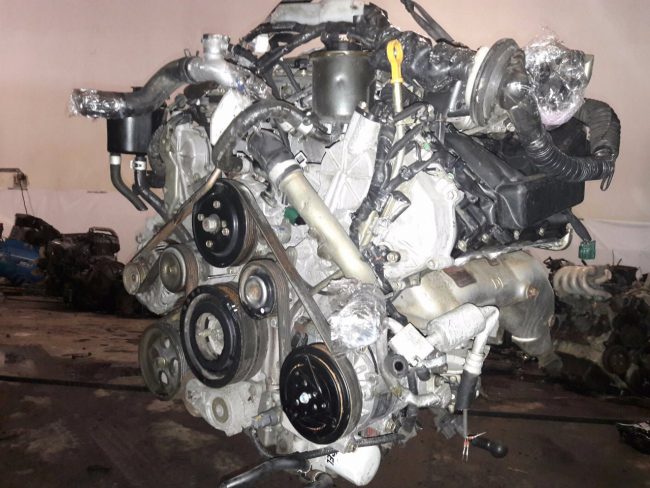
Engines Nissan VK45DD, VK45DE
Content
Concern "Nissan" is famous for the production of budget, but very high quality products. Despite this, in the model lines of the manufacturer there are also expensive, executive or sports cars.
For such models, the Japanese independently design and manufacture motors that have good functionality and the highest level of reliability. Today we will talk about two quite powerful Nissan engines - VK45DD and VK45DE. Read more about the concept, the history of their creation and features of operation below.
About the design and creation of motors
The ICEs considered today in the face of the VK45DD and VK45DE entered the Nissan conveyors in 2001. They were produced for 9 years, that is, in 2010, the creation of engines ceased. VK45DD and VK45DE replaced outdated units for representative and sports models of the concern. To be more precise, the units have replaced the VH41DD/E and VH45DD/E. They were mounted mainly in Infiniti Q45, Nissan Fuga, President and Cima.

VK45DD and VK45DE are 8-cylinder, gasoline engines with a reinforced design and sufficiently large power. Variations of engines with a volume of 4,5 liters and 280-340 “horses” came out in the final release. The differences between VK45DD and VK45DE lie in several aspects of their construction, namely:
- Compression ratio - for VK45DD it is 11, and for VK45DE it is at the level of 10,5.
- The power supply system - the VK45DD has a direct feed under the control of a special unit, while the VK45DE uses multi-point fuel injection into the cylinders (a typical injector).
In other aspects, the VK45DD and VK45DE are completely identical motors built on the basis of the aluminum block and its head typical for Nissan.

Compared to their predecessors, these motors have a more thoughtful design and are noticeably lighter. Over time, the VK45s became outdated and more modern engines came to replace them, so since 2010 the VK45DD and VK45DE have not been produced. You can meet them only in the form of contract soldiers, the price of which is in the range of 100-000 rubles.
Specifications for VK45DD and VK45DE
| Manufacturer | Nissan |
|---|---|
| Motor brand | VK45DD/VK45DE |
| Years of production | 2001-2010 |
| Cylinder head | aluminum |
| Food | multi-point injection / direct electronic injection |
| Construction scheme | V-shaped |
| No. of cylinders (valves per cylinder) | 8 (4) |
| The piston stroke, mm | 83 |
| Cylinder diameter, mm | 93 |
| Compression ratio | 10,5/11 |
| Engine displacement, cubic meters cm | 4494 |
| Power, HP | 280-340 |
| Torque, Nm | 446-455 |
| Fuel | gasoline (AI-95 or AI-98) |
| Environmental standards | EURO 4 |
| Fuel consumption per 100 km of track | |
| - in the city | 19-20 |
| - along the track | 10-11 |
| - in mixed driving mode | 14 |
| Oil consumption, grams per 1000 km | to 1 000 |
| Volume of oil channels, l | 6.4 |
| Type of lubricant used | 0W-30, 5W-30, 10W-30, 5W-40 or 10W-40 |
| Oil change frequency, km | 5-000 |
| Engine resource, km | 400-000 |
| Modernization options | available, potential - 350-370 hp |
| Serial number location | the rear of the engine block on the left, not far from its connection with the gearbox |
| Equipped models | Infiniti Q45 Infiniti m45 Infiniti FX45 Nissan fuga Nissan president nissan top |
Note! The units in question were produced only in the form of a gasoline aspirated. It is impossible to meet a different variation of motors with a turbine or characteristics other than those noted above.
Repair and service
VK45DD and VK45DE are very reliable motors, what can we say about their phenomenal resource. Half a million kilometers for an executive class ICE with such power is really a lot. There is a similar quality even in the products of the Nissan concern infrequently. VK45-x do not have typical faults, however, it is important to check one aspect of the design before starting their operation.


Watch this video on YouTube


Watch this video on YouTube
We are talking about the front catalysts, which are often destroyed due to poor fuel and high loads. Their ceramics get into the cylinders and provoke irreversible damage, requiring a complete replacement of the motor. To prevent this, it is enough to either constantly check the catalysts, or simply replace them with flame arresters and do chip tuning. With this approach and systematic maintenance, the problems of VK45DD and VK45DE should not arise.
As for the modernization of these units, it is quite acceptable. The potential of the motors in question is 350-370 horsepower with 280-340 declared. Tuning VK45DD and VK45DE comes down to changing their design. Usually enough:
- improve camshafts;
- strengthen the CPG;
- upgrade the exhaust system;
- reflash "brains".
Such manipulations will add 30-50 "horses" to the drain. There is no need to install turbines, turbo kits and other superchargers on VK45s. This is not only inexpedient in terms of spending, but also greatly affects the resource of engines. It is much more rational and literate to simply change the design of the motors, getting a guaranteed and trouble-free 30-50 horsepower. The bonus is really good.

